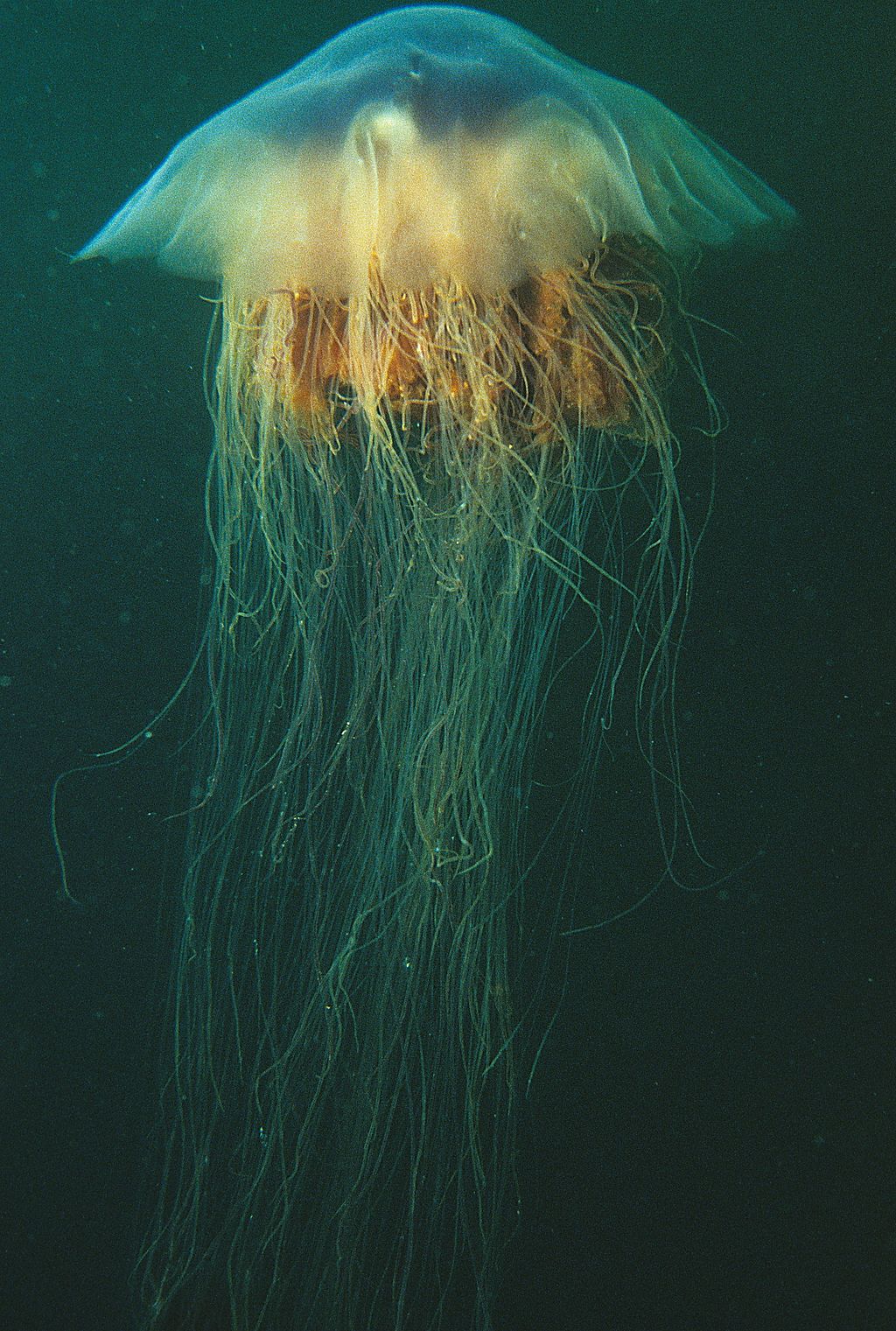

If conditions are not favorable, budding off of non-motile clone scyphistomes occurs.
#Lions mane jellyfissh free#
The released planula are free swimming for a few hours to several days until they attach to a shaded rough area.Īsexual: After settling, the planula develop into tentacled polyps called scyphistomes. Sexual: The male broadcasts sperm that find their way to the eggs in the female’s gonads where they are fertilized and then brooded on the folded margins of the female’s oral arms until they develop into flat, bean-shaped, ciliated, free swimming larvae called planulae. Like other true jellies, these jellies have sexual and asexual stages in their complex reproductive cycle. The oral arms also fire nematocysts to collect food directly without use of the tentacles. If the prey is too large to enter the gastric cavity, such as a mature moon jelly, digestion starts on the oral arms. It then drives the food item into the oral arm groove from which it travels to the manibrium, (an esophagus-like connection between the mouth and the stomach cavity), and then to the stomach, where it is digested. The oral arm grasps the food spreading slimy fish smelling mucus over the surface of the prey. At the same time, the oral arm moves inward, turns slightly, and draws its inner layer near the food at which point the tentacles release the prey. The tentacles then contract and bend toward the nearest oral arm. When its sticky tentacles touch a food item, harpoon-like stinging cells called nematocysts are fired, paralyzing the prey. The lion’s mane jelly stalks and pursues its prey. DietĪ carnivorous predator, lion’s mane jellies feed on fish larvae and eggs, tiny crustaceans, small fishes, copepods, and other jellies, especially moon jellies ( Aurita spp). Overall most lion’s mane jellies have a bell diameter from 30-61 cm (1-2 ft), tentacles that are 1.8-2.4 m (6-8 ft) long, and oral arms as long as the bell is wide. Those jellies found in the warmer waters of the southeast United States are the smallest with bells reaching 13-15 cm (5 -6 in) and tentacles 2-7 m (7–9 ft) long. Lion’s mane jellies in the northeast and northwest United States and Canada can have bells reaching 51 cm (20 in) and tentacles 9 m (30 ft) long. Bells of individuals found in the very cold Arctic and Antarctic waters can grow to 3 m (7 ft) with tentacles as long as 30 m (100 ft).

Size of these jellies is dependent on their geographic location. Juveniles are yellowish to pinkish, changing to darker colors as they mature. The tentacles are usually yellow, yellow-brown, or red and the oral arms are usually a violet color. Bell colors can be milky to pale pink, brick red to reddish-purple, or yellowish- brown. Highly folded, frilly, short oral arms about as long as the bell is wide form a block-like mass on the underside of the bell. Seventy to 150 horseshoe-shaped clusters of tentacles arranged in four distinct rows hang from the underside of the subumbrella. The gelatinous bell or umbrella of the lion’s mane jelly is broad, flattened, and has an eight lobed or scalloped margin. These jellies live in cold, temperate, and subtropical coastal waters. Also in the Baltic Sea and some Japanese and Chinese waters. Arctic and Antarctica along the coasts of eastern Canada and the Pacific northwest seasonally occasionally as far south as southern California and southern Florida. Geographic DistributionĪlmost worldwide in all but tropical waters. This species was part of the Aquarium’s Jellies exhibits in 2015. Lion’s mane jellies are no longer on exhibit at the Aquarium. CLIMATE CHANGE: Not Applicable At the Aquarium


 0 kommentar(er)
0 kommentar(er)
